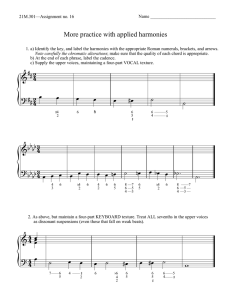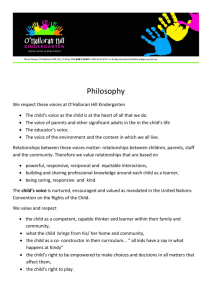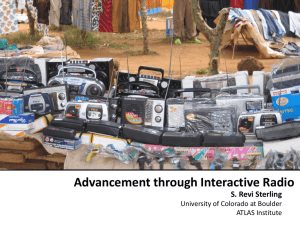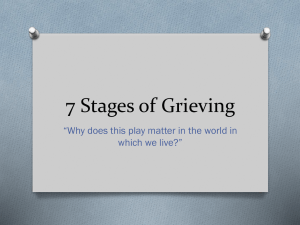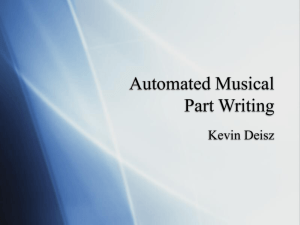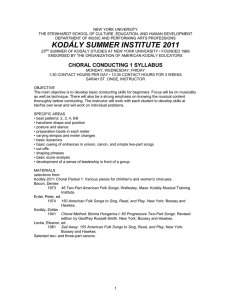FINAL PROJECT: Performing forces
advertisement
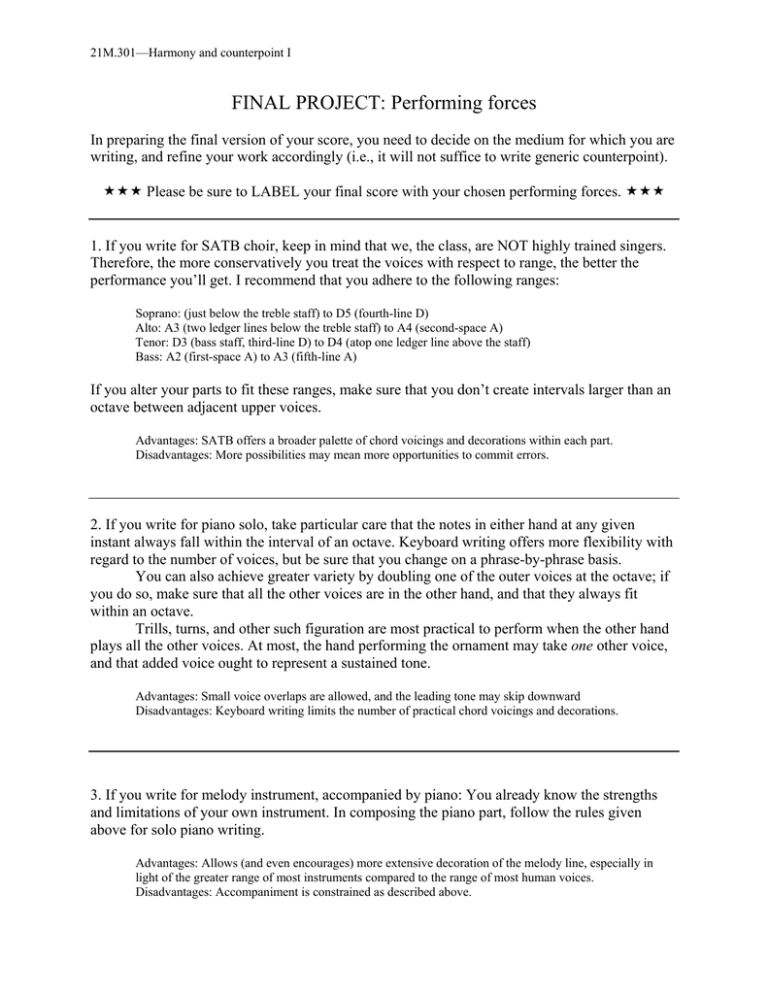
21M.301—Harmony and counterpoint I FINAL PROJECT: Performing forces In preparing the final version of your score, you need to decide on the medium for which you are writing, and refine your work accordingly (i.e., it will not suffice to write generic counterpoint). Please be sure to LABEL your final score with your chosen performing forces. 1. If you write for SATB choir, keep in mind that we, the class, are NOT highly trained singers. Therefore, the more conservatively you treat the voices with respect to range, the better the performance you’ll get. I recommend that you adhere to the following ranges: Soprano: (just below the treble staff) to D5 (fourth-line D) Alto: A3 (two ledger lines below the treble staff) to A4 (second-space A) Tenor: D3 (bass staff, third-line D) to D4 (atop one ledger line above the staff) Bass: A2 (first-space A) to A3 (fifth-line A) If you alter your parts to fit these ranges, make sure that you don’t create intervals larger than an octave between adjacent upper voices. Advantages: SATB offers a broader palette of chord voicings and decorations within each part. Disadvantages: More possibilities may mean more opportunities to commit errors. 2. If you write for piano solo, take particular care that the notes in either hand at any given instant always fall within the interval of an octave. Keyboard writing offers more flexibility with regard to the number of voices, but be sure that you change on a phrase-by-phrase basis. You can also achieve greater variety by doubling one of the outer voices at the octave; if you do so, make sure that all the other voices are in the other hand, and that they always fit within an octave. Trills, turns, and other such figuration are most practical to perform when the other hand plays all the other voices. At most, the hand performing the ornament may take one other voice, and that added voice ought to represent a sustained tone. Advantages: Small voice overlaps are allowed, and the leading tone may skip downward Disadvantages: Keyboard writing limits the number of practical chord voicings and decorations. 3. If you write for melody instrument, accompanied by piano: You already know the strengths and limitations of your own instrument. In composing the piano part, follow the rules given above for solo piano writing. Advantages: Allows (and even encourages) more extensive decoration of the melody line, especially in light of the greater range of most instruments compared to the range of most human voices. Disadvantages: Accompaniment is constrained as described above.

